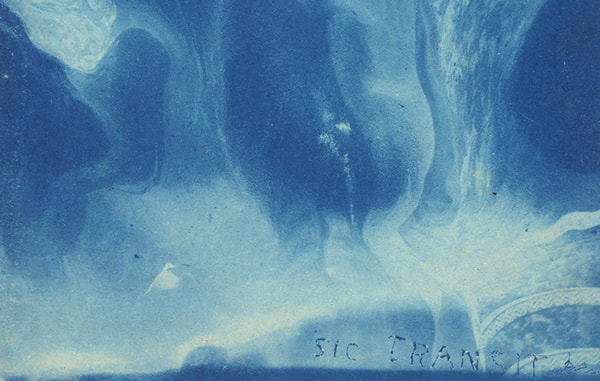Selecting a tube of blue paint is not straightforward. An artist's color palette is deeply rooted in our ancient ancestry. One color conveys a metaphysical extension of our closed physical system to a broader universal consciousness. Blue is a symbol of transcendence.
Blue has a rich history and metaphysical symbolism that dates to our Neolithic forebears. Its oldest known use can be traced to the jewellery of the ancient Indus Valley civilization, who used a particular semi-precious stone acquired through their pioneering practice of mining, estimated to be over 9,000 years old. This deep and vibrant stone has a name originating from the Latin 'ultra marinus,' meaning 'beyond the sea.' The name was bestowed by the Italian city-state of Genoa and the Venetian traders, who transported the stone via Eastern traders. Its place of origin—the Sar-i Sang mine in the Badakhshan region of Afghanistan—still stands as the source of its purest form.
Trade in ultramarine preceded the Italian city-states and had already been established by the Roman Empire with the Parthians of Persia through the agreements of the Pax Romana. Before its association with the sea and the Italian traders' naming, this blue pigment was identified with the semi-precious stone from which it was derived, Lapis Lazuli. The Medieval Latin 'Lapis' translates as 'stone,’ while 'Lazuli' has its roots in Sanskrit but is linguistically bracketed through the Persian word lāžaward, translated in English as 'Heaven.' This nomenclature provides an insight into the metaphysical perspective of our ancestors, implying that these vibrant blue stones were not of this world, but were rather celestial bodies that descended from the heavens and lodged themselves deep within the mountains.
Subscribe to the New PRS Journal to read on...
Blue has a rich history and metaphysical symbolism that dates to our Neolithic forebears. Its oldest known use can be traced to the jewellery of the ancient Indus Valley civilization, who used a particular semi-precious stone acquired through their pioneering practice of mining, estimated to be over 9,000 years old. This deep and vibrant stone has a name originating from the Latin 'ultra marinus,' meaning 'beyond the sea.' The name was bestowed by the Italian city-state of Genoa and the Venetian traders, who transported the stone via Eastern traders. Its place of origin—the Sar-i Sang mine in the Badakhshan region of Afghanistan—still stands as the source of its purest form.
Trade in ultramarine preceded the Italian city-states and had already been established by the Roman Empire with the Parthians of Persia through the agreements of the Pax Romana. Before its association with the sea and the Italian traders' naming, this blue pigment was identified with the semi-precious stone from which it was derived, Lapis Lazuli. The Medieval Latin 'Lapis' translates as 'stone,’ while 'Lazuli' has its roots in Sanskrit but is linguistically bracketed through the Persian word lāžaward, translated in English as 'Heaven.' This nomenclature provides an insight into the metaphysical perspective of our ancestors, implying that these vibrant blue stones were not of this world, but were rather celestial bodies that descended from the heavens and lodged themselves deep within the mountains.
Subscribe to the New PRS Journal to read on...
Nothing comes from nothing. Manly Hall’s vision for the All-Seeing Eye was entirely supported by contributions from its readers who paid for their subscription with gifts made according to their means. Manly Hall wrote,
“This magazine is published and distributed privately to those who make possible with their financial support its publication. The magazine cannot be bought and has no fixed value. Like all of the ancient teachings which it seeks to promulgate, it has no comparative value, but the students must support it for its own intrinsic merit.”



